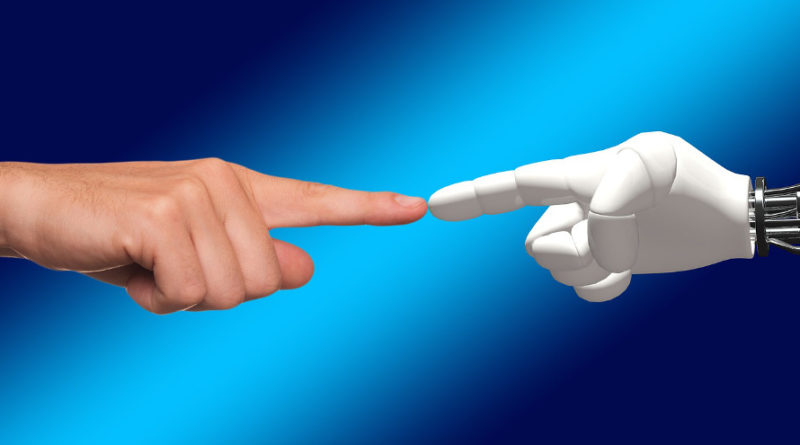Neurotechnology To Grant Us Superpowers
“The empires of the future are the empires of the mind.”
Winston Churchill
In the third and final part of Alternative Human Community’s interview with Dr. Avinash Singh, transhumanist and cybernetics researcher at the Australian Artificial Intelligence Institute, University of Technology Sydney, we focus on the outlook of AI, Brain-Computer Interface, neuroscience and other cutting-edge technologies as well as some examples of these technologies already in popular use.
Sturm Enrich: What’s the final product of AI or transhumanism? Genetically better (thanks to gene modification / editing) and more intelligent (thanks to AI) human being or – gradually – a machine?
Dr. Avinash Singh: The ultimate product of transhumanism is posthumanism or Human 2.0. I prefer to call it ‘Singularity’, that’s the stage when humans and machines become one (singular) and work together in perfect synchrony. Such synchrony and merger will afford us greater control over our physical appearance, strength and ability while enhancing cognition, sensory perception, etc.
Sturm Enrich: If, in view of AI-powered evolution, we‘ll eventually become entirely inorganic and dependent on technology for everything including reproduction (replication, I guess), won’t we also dispose of human emotions?
Dr. Avinash Singh: In a sense, yes. In fact, it is happening all around us, especially with the youth. The kids don’t feel awkward or even aware of the fact that they are talking with computers or devices just like they speak with other people. The same is gradually becoming true of adults. Now, the question is whether we lack an appropriate emotion for interfacing with technology, are we developing a new emotion, or are we simply becoming highly adapted to technology.
So, my answer to this question is that we don’t surrender human emotions to tech, but our emotions are evolving in-keeping with technology. Youth can live and talk with a bot like we do with another human being or a pet. The current generation might lose a specific emotion while simultaneously gaining a completely new one.
Intergenerational differences are – to a large extent – created by the younger generation’s adaptation to a changed reality. Our rapid technological advances require fast-paced adaptation. Such an adaptation will accelerate our evolution and transform our emotions.
Sturm Enrich: Longevity and even immortality are being explored as we speak. Do you foresee the possibility of “recording” an individual’s consciousness, mind, character and personality? (I read that you believe that the body can be replaced.) Could then such a “replacement body” become a host of someone’s else’s “recorded” persona? So, in the event of the individual’s death, we would miss the appearance but not the presence of a loved one?
Dr. Avinash Singh: I believe that Digital Immortality is possible with the help of Mind Uploading. As we are progressing toward the future, other technologies like bio-printing or even a fully humanoid body might replace the biological one with a mind downloaded in it. Such a body will be able to morph over time into the same body you were born with. Once it is possible to replace a body and download a brain, it will become possible also to choose a host body and even change host bodies like we change clothes.
This is the kind of future we are heading for. What I’m saying may sound like ‘Altered Carbon,’ but that’s what I see coming.
Until disposable fully humanoid host bodies become widely available, I want to stress that we have already tested virtual forms of substitution, for example, when we are talking with someone over the phone or video call. You can still feel them, probably not the same as physically, but you can adapt very quickly. In all likelihood, we’ll react the same way to a virtual host body. You will still see someone with exactly the same memory and voice as you know. The impression of sameness will compensate for the physical sensation of touch.
Sturm Enrich: Wow! Your insights had a profound impact on me. Every then and again, you render me speechless, Dr. Singh.
When do you expect the first large-scale attempt of physically merging humans with technology to take place?
Dr. Avinash Singh: The process – in its basic form – has already begun. Our mobile phones, laptops and smartwatches are an essential part of everyday routine. Diabetes patients have access to automatic diabetes patches.
Editor’s remark: In the United States there are currently two types of diabetes patches available: the Insulin patch-pump (that monitors glucose levels and delivers fast-acting insulin through a needle from an insulin cartridge; both of which are parts of the device) and Continuous glucose monitoring systems (which allow the user to monitor blood sugar levels throughout the day, in some cases, with the help of a smartphone).
Dr. Avinash Singh: Other sensors already on the market can be printed on or implanted into the skin to monitor other health-related parameters.
There are Augmented Reality glasses that will soon become modified for use as direct implants for human retinas. (With the Augmented Reality glasses or implants, you’ll be able to access information as you do over the smartphone but by simply blinking your eyes or – potentially – by thinking while using BCI.)
Some exoskeletons can be worn like suits and enhance your physical strength.
These are just some examples of technology that’s just around the corner.
Now fast forward into the future, some 20 or 30 years from now, we will start seeing human and machine mergers at a larger scale.
I expect that people will be able to replace failing organs in their bodies with a synthetic equivalent. There’ll be continuously floating nanobots in human bodies to monitor our health and fight bacterial or viral infections even before we develop symptoms. There’ll be extended artificial brain for more memory and enhanced cognition. This is not science fiction anymore but a fast-approaching, new reality.
Sturm Enrich: That’s mind-boggling!
Thank you, Dr. Singh, for sharing your knowledge and thoughts with the readers of Alternative Human Community. The average, non-scientist isn’t aware of the achievements, prospects or concerns of new technologies. Because of you, we’ve all come closer to the concept of transhumanism.
Greed, lack of ethics or outright crime may endanger your – and your colleagues – work just like they threaten today’s reality. But the value of the new advancements is above and beyond our most-daring expectations. Once again, please accept our thanks for the gift of your knowledge, perspective and time.
*
The future – according to Dr. Avinash Singh – looks fantastic and can’t come fast enough for me. It will introduce a new and improved breed of human beings; the human beings we always longed to be: semi-gods, super-intelligent and invincible Supermen and Superwomen.
Woops! My conversation with Dr. Avinash Singh came to an end and I forgot to ask whether anyone is developing a nobility microchip for the upcoming generation of Superheroes….
About Dr. Avinash Singh:

Dr. Avinash Singh is an Australian Research Council Postdoctoral Research Fellow at the Australian Artificial Intelligence Institute in University of Technology Sydney (UTS), Australia, and Founder of India Future Society. He is also a member/advisor of think-tanks such as IEEE, Transhumanism Australia, International Longevity Alliance, Lifeboat Foundation, and recently Transhuman Coin. He also serves the IEEE Standards committee on Neuroethics and Brain-Computer Interface (BCI), and recently received Google TensorFlow Faculty Award to support and promote his work in BCI.
His current research interests are integrating artificial intelligence (Al) technologies with cognitive neuroscience knowledge to explore cognitive functions, discover the relationships between brain dynamics, evaluate everyday interaction, make decisions, and develop robust next-generation brain-computer interfaces for the masses.
LinkedIn: https://www.linkedin.com/in/avinashks/
UTS: https://profiles.uts.edu.au/Avinash.Singh
*
Exclusive interviews with Dr. Avinash Singh, transhumanist and cybernetics researcher:
Advanced Technology Can Lead To Either Utopia Or Dystopia
*
Photo on top of this post by Gerd Altmann from Pixabay




